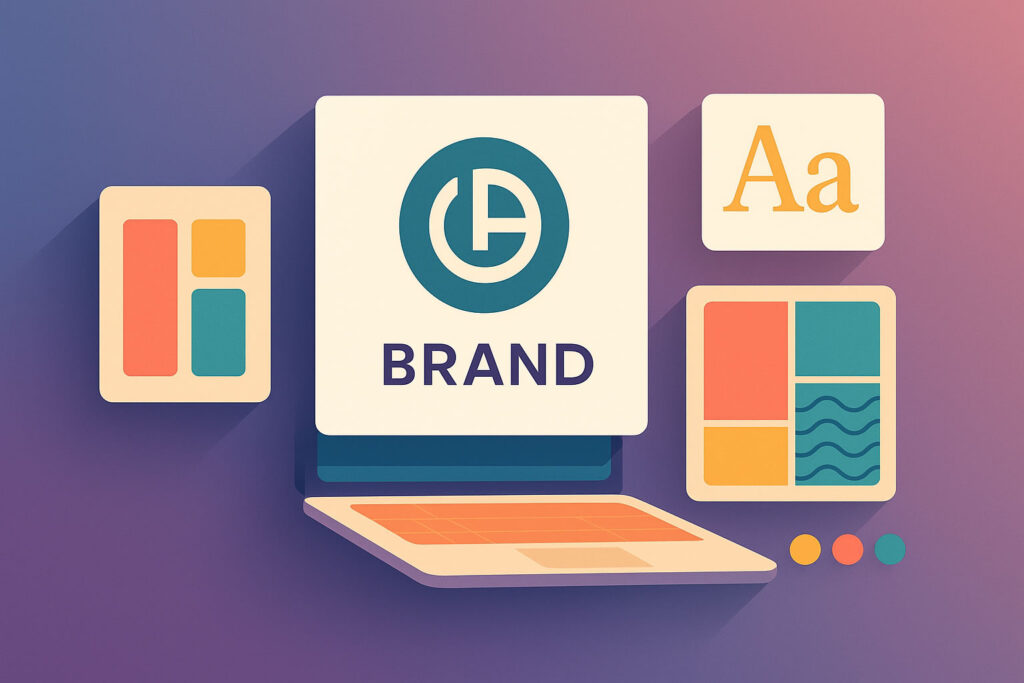Web Design vs Web Development: Differences and Synergy

Web Design vs Web Development: Differences and Synergy
A clear plan for web design vs web development helps teams deliver modern, accessible, and fast websites. This guide explains how the roles differ, where they overlap, and how to collaborate from UX/UI to code, including front-end vs back-end work and the designer–developer handoff.
Table of contents
- Introduction to Web Design and Web Development
- Defining Web Design – Focus on UX/UI and Visual Elements
- Defining Web Development – Front-End and Back-End Roles
- How Web Design and Web Development Work Together
- The Impact of Website Builders on Design and Development
- Contrasting Perspectives and Collaborative Challenges
- Future Trends and Skills for Bridging Design and Development
- Conclusion: Building Modern Websites Through Integrated Efforts
Introduction to Web Design and Web Development
Web design and web development are closely linked disciplines that turn ideas into interactive experiences. Design shapes the user interface and experience, while development implements the experience with code, systems, and workflows that scale. Teams often coordinate from discovery through launch to maintain quality across devices, content, and performance goals [^1][^2].
Defining Web Design – Focus on UX/UI and Visual Elements
Web design centers on UX/UI: structure, navigation, layout, typography, color, and interaction states. Designers create wireframes, prototypes, and design systems that guide consistent components and patterns. They consider accessibility, content strategy, and feedback loops that shape the product’s feel and clarity [^1][^2].
Practical outputs:
- User flows and information architecture
- Responsive layouts and component specs
- Design tokens, grids, spacing, and type scales
- Prototypes that communicate motion and states
Defining Web Development – Front-End and Back-End Roles
Development translates plans into software. It includes client-side interfaces and server-side systems that manage data, security, and performance. The scope spans tooling, testing, CI/CD, and monitoring to keep releases reliable [^2][^5].
Front-End Development and Its Overlap with Design
Front-end work focuses on HTML, CSS, and JavaScript frameworks to build accessible components and pages. It brings visual and interaction details to life: states, animations, and inputs. Collaboration here is deep because component structure, semantics, and constraints affect both UX/UI and code quality. Shared naming and tokens help keep parity across Figma and the codebase [^1][^5].
Key areas:
- Semantic markup, ARIA, and accessibility testing
- Responsive design patterns (Grid, Flexbox, container queries)
- State handling, routing, and component libraries
- Performance budgets, images, fonts, and scripts
Back-End Development and Website Functionality
Back-end work covers servers, databases, APIs, authentication, and integrations. It enables core features, content models, and workflows. Stability, security, and uptime come from well-structured services, caching, and observability. These choices influence front-end behavior and website performance optimization at scale [^5].
Focus areas:
- API design and data modeling
- Caching, CDNs, and edge logic
- Security, rate limiting, and auditing
- Testing, logging, and deployment automation
How Web Design and Web Development Work Together
From kickoff, teams align on goals, audiences, accessibility standards, and KPIs. Designers validate flows with prototypes. Developers assess feasibility, performance, and data needs. Shared rituals—critiques, pairing, and reviews—reduce rework and keep intent intact through delivery [^1][^3].
Responsive Design and Performance Optimization
Responsive design starts early, considering content and constraints. Mobile-first layouts, fluid grids, and flexible media keep sites usable across breakpoints. Performance is part of UX: optimize images (srcset, lazy-loading), control script weight, and set budgets for Core Web Vitals. These choices support better engagement and conversions.
- Techniques: critical CSS, preloading, HTTP/2 multiplexing, caching, and CDNs
- Tooling: Lighthouse, WebPageTest, and browser DevTools for diagnostics
- Outcomes: faster rendering, less layout shift, and stable interactions
According to a 2020 study by Google, responsive design can reduce bounce rates by up to 50% and increase engagement time by 30% on mobile devices.
For more practical tips, see our related article on building fast, user-first sites: https://zenithwebsites.com/3035-2/
The Designer–Developer Handoff Process (e.g., Figma to Code)
A smooth designer–developer handoff (Figma to code) depends on shared components, named styles, and clear documentation. In Figma, use variants, constraints, and developer-ready properties. Annotate states, spacing, and behavior. Then link tickets to frames and specs so engineers can reference a single source of truth. Versioning and change logs prevent drift. Pairing on complex interactions reduces ambiguity [^3].
- Prepare: audit components, define tokens, and tag assets
- Specify: breakpoints, content limits, and edge cases
- Deliver: export assets, provide links to frames, and reference acceptance criteria
- Validate: QA against designs; update library if patterns evolve
A 2023 survey from UX Collective found that over 80% of teams use Figma or similar tools for collaboration and handoff.
The Impact of Website Builders on Design and Development
Website builders (WordPress, Bluehost) influence workflows with themes, block editors, and plugin ecosystems. For example, WordPress provides a flexible foundation for content models, templating, and extensibility through themes and plugins. Teams can combine design systems with platform capabilities to accelerate delivery while maintaining code quality and accessibility standards [^4].
As of 2023, WordPress powers approximately 43% of all websites on the internet, and Bluehost remains one of the top hosting providers for DIY sites, growing its market share by about 7% year-over-year.
Contrasting Perspectives and Collaborative Challenges
Even strong teams face friction. Common pitfalls include:
- Missing or inconsistent component names between design and code
- Unclear breakpoints, content limits, and error states
- Late discovery of API or performance constraints
- Environment differences that mask defects
Practical ways forward:
- Maintain a shared design system and tokens across tools
- Document acceptance criteria for behavior, accessibility, and performance
- Align early on data contracts and loading states
- Use structured reviews: design critiques, code reviews, and cross-discipline demos [^1][^2][^3]
Future Trends and Skills for Bridging Design and Development
Skills that help bridge roles:
- Component-driven thinking and design tokens
- Strong fundamentals in accessibility and semantics
- An eye for responsive design with performance in mind
- Familiarity with front-end vs back-end boundaries and how APIs shape UX [^5]
Emerging practices:
- Container queries and modern CSS tooling
- Variable fonts and smarter asset pipelines
- Closer alignment between design libraries and code components
Conclusion: Building Modern Websites Through Integrated Efforts
Modern websites succeed when design and development move together. Clear UX/UI intent, tested prototypes, and disciplined engineering turn ideas into responsive, high-performing products. With shared systems, thoughtful handoff, and continuous feedback, teams deliver consistent experiences at scale [^1][^3][^5].
References
[^1]: The Difference Between Web Design and Web Development — smashingmagazine.com — https://www.smashingmagazine.com/2020/06/web-design-vs-web-development/
[^2]: Web Design vs. Web Development: Explained — codecademy.com — https://www.codecademy.com/resources/blog/web-design-vs-web-development/
[^3]: How Designers and Developers Collaborate Using Tools Like Figma — figma.com — https://www.figma.com/blog/design-developer-hand-off-how-to-make-it-smooth/
[^4]: The Role of Website Builders in Modern Web Development — wpbeginner.com — https://www.wpbeginner.com/beginners-guide/what-is-wordpress/
[^5]: Front-End vs Back-End Development: What’s the Difference? — freecodecamp.org — https://www.freecodecamp.org/news/front-end-vs-back-end-development-roles-and-responsibilities/
Meta description: Understand web design vs web development, how they overlap, and how teams build responsive, high-performing sites with better Figma-to-code handoffs.







Responses